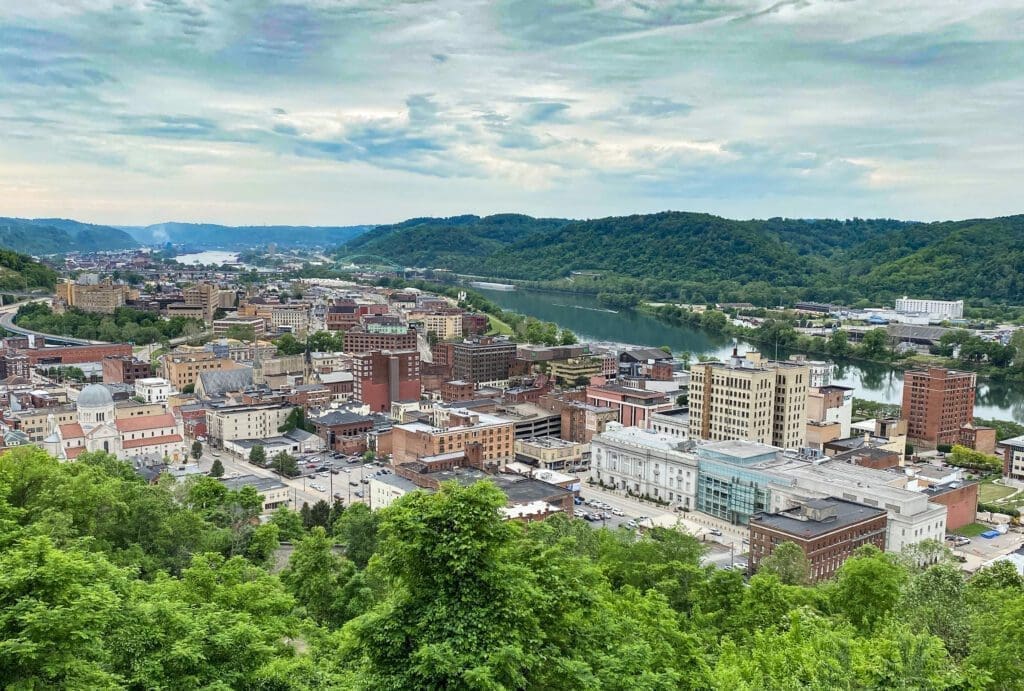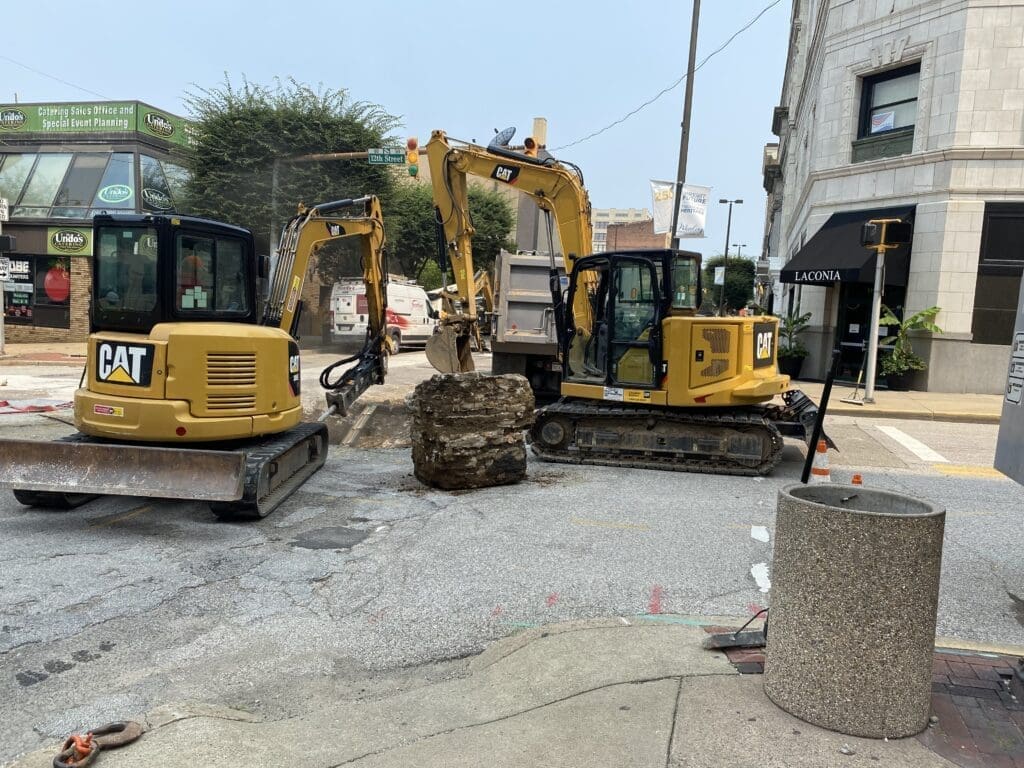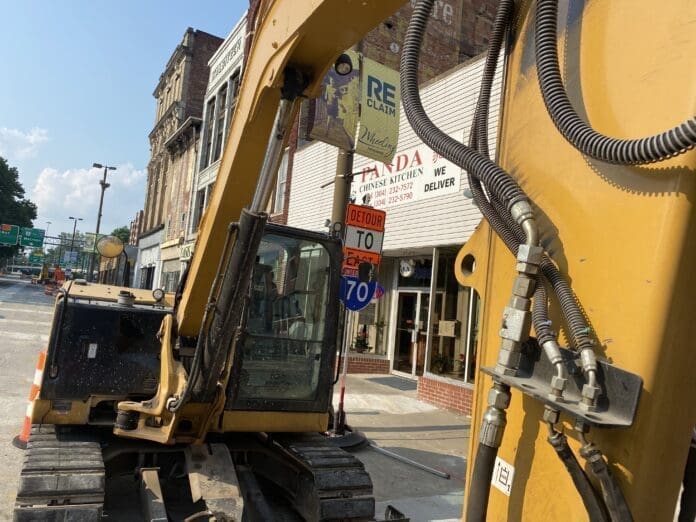Big, colorful, and constant.
Backhoes, dump and cement trucks, and of course, orange barrels are what the majority of motorists have seen while traveling Main and Market streets during the past three years in downtown Wheeling. Infrastructure improvements and replacements involving storm sewers and water and gas lines have been performed in preparation for the streetscape project that is expected to begin at some time this year.
Whether or not the plan remains in place is unknown after Tony Scott, district engineer in W.Va. Division of Highway District 6, did not return a message left Monday afternoon.
The final project is ongoing along Main Street near 12th Street and, according to Public Works Director Rusty Jebbia, the work is expected to be finished in February 2022.
“The city project taking place now in downtown Wheeling is the replacement of the water line that was installed back in 1886,” Jebbia explained. “The other project that is happening right now involves Mountaineer Gas replacing its gas lines downtown. Now, the water line project is estimated to be finished by February, and we’re hopeful that’s the case.
“The water line project has involved Main and Market streets, and so far we have installed a storm sewer along Main Street,” he said. “Once the construction is finished with the waterline, that will be it until the streetscape project begins. Right now, I do not know when it will begin because it’s a state project and not one the city is doing. I know the plans for it have been submitted to the Division of Highways for review, and that is taking place in Charleston.”

Infrastructure Investment
The logic is simple to understand. Dig into the streets and upgrade or replace the utility pipes before the streets are paved for the first time since the mid-1990s. Mountaineer Gas has cooperated with the City of Wheeling’s plan to perform the upgrades now in an effort to delay any disruption to the smoothed streets.
The City of Wheeling, in fact, has spent approximately $5 million on the improvements, according to City Manager Bob Herron. The streetscape project initially was developed in 2015 by former mayor Andy McKenzie, but the cost has increased from $9 million to $25 million for a multitude of reasons.
Along with paved roadways, the project will include new sidewalks, updated crosswalk ramps, different trees, and state-of-the-art traffic signalization.
“The biggest problem that’s been experienced by the water line construction company is that when you put a new water main into the ground, the old one has to continue operating for the businesses in downtown Wheeling. Another part of it involves the installation of the service lines to those businesses, so when the new main is activated, those folks will have access to the service,” Jebbia said. “But on Main Street, they had to run a temporary line along both sides of the roadway because there are so many other utilities under there.
“We still have a storm sewer line that needs to be installed, but that work will take place during the streetscape,” he said. “I know it’s been a problem to get around downtown Wheeling the past couple of years with the lane and street closures. There’s been a lot of dirt and dust during the construction, but it is work that was overdue and had to be done. We knew when the streetscape came about that replacing the 20-inch, 150-year-old water main had to be a priority.”

Historical Discoveries
When excavators were sculpting for the new headquarters of The Health Plan, large vaults were discovered along Main and Market streets. While no valuable treasures were found inside the storage areas, the discoveries offered insight into how downtown Wheeling businesses conducted operations during the 1800s.
Since then, the DOH has found many more vaults along Main and Market streets, and those uncoverings have increased the cost of the two-year project. Because downtown Wheeling has been a destination for residents of the Upper Ohio Valley since the early 1900s, mysteries remain about exactly what is underground.
“That’s always the problem with the downtown area. Unfortunately, there’s no way for users to see through the asphalt to see where everything is now,” Jebbia said. “We know about all of the utilities that are under there, but there are so many more obstructions because of how old our city is. There have been times when we will see something on a plan, but once we get in there, it sometimes has been 10 feet off from where the designers thought it was.
“When that takes place, it throws everything off, and a new plan has to be developed very quickly,” he continued. “It does complicate things when you are dealing with a city as old as ours.”


